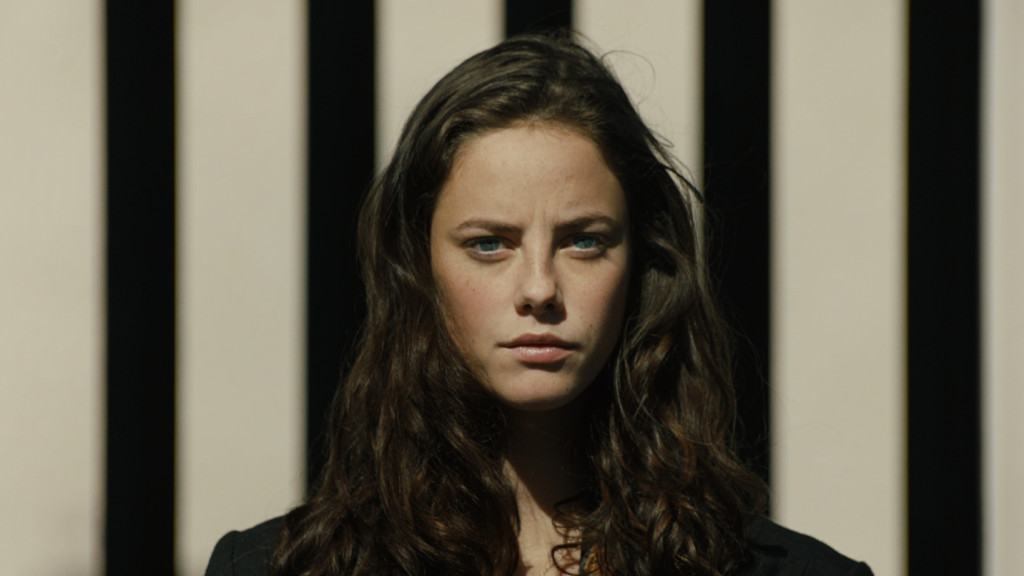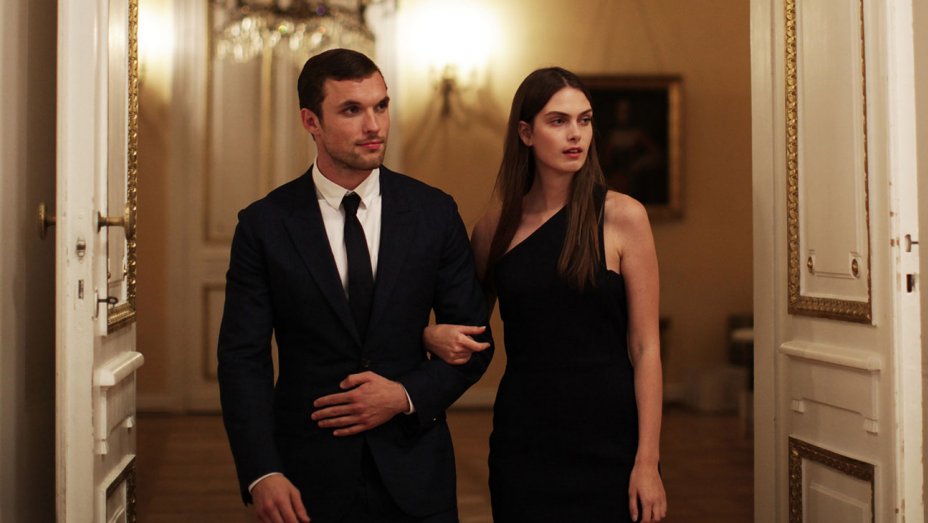6. Ghost World

Although this movie is now considered a cult film, it is not mainstream nor has it been watched by many, even though it is a hidden pearl among movies from the beginning of the 21st century.
It is clear that this movie derived inspiration from Japanese culture (manga comics); you get to see that in certain scenes and the way the characters were shaped. Also, the only constant throughout the movie are dialogues about any kind of art (comics and music) and open sarcasm.
It is a 2001 American coming-of-age dark comedy directed by Terry Zwigoff. It stars Thora Birch as Enid and Scarlett Johansson as her best friend Rebecca. Those two decide to find part-time jobs and move in together after graduation because they do not have any plans for the future. They spend their days wandering around, trying to find a meaning in life. In one of those “adventures,” they meet Seymour (Steve Buscemi) and Enid becomes truly interested in his love life and wants to help him achieve more success with women. They soon develop an unlikely friendship despite the age gap, while Enid grows apart from Rebecca. Enid starts to feel a deep emotional connection with Seymour, but at the same time she feels lost and confused with her own life.
This movie is shaped not only in an artistic, but also a philosophical way. Existentialism, fights with absurdity, and the search for meaning in endlessly meaningless everyday life is what makes this movie unique and mysteriously beautiful. One of the best metaphors for the search for purpose or the spark of freedom is Norman, old man who waits for a bus at a station where buses have been out of service for years. At the end of the movie he is gone, but so is Enid, as she gets on a bus on that closed station. Many questions are raised, but the main one is this: Is is possible to actually “catch” that out-of-service bus?
7. Lolita

The novel “Lolita” became a symbol for the word ‘controversial,’ because of its obscene plot. Depicting the shameless love between a middle-aged professor and a minor, Nabokov’s story inspired Kubrick to make mild movie version in 1962. Thirty-five years later, Adrian Lyne decided to make a new, slightly changed, more “in your face” version of “Lolita.”
It is an American-French movie, starring Jeremy Irons as Humbert Humbert and Dominique Swain as Lolita. One interesting fact is that the movie had its first theatrical release in Europe, and then in the United States. Australia did not get a chance to see the movie until 1999.
The story follows Humbert, a professor of French literature, who decides to move to the United States due to a new teaching position. He rents a room from Charlotte Haze (Melanie Griffith) who has an adolescent daughter named Dolores. He becomes obsessed with her – Lolita, a nymphet as he calls girls that age – and soon after moving, he marries Charlotte, who is clearly smitten with him. Their marriage is just a mask, as Humbert only wants to be near Lolita.
After an argument, Charlotte tragically dies in a car accident and Humbert takes care of Lolita. They become romantically involved, but keep it a secret. They act as daughter and father and it leaves detrimental effects on Lolita’s mental health. Lolita tries to have a normal childhood and activities, but also manipulates Humbert, because she is aware of the effect she has on him. As time goes by, this toxic relationship leads them both to fatal tragedies.
When it comes to morality, Humbert is undeniably wrong, despite the fact that through the film, we start to sympathize with him, because we understand what made him the way he is. There is no justification for his actions whatsoever, but crucial for the story is understanding. He is just an emotionally immature, sad child, captured in the body of a middle-aged man. Lolita, on the other hand, seems to be a tragic character as well, a girl whose childhood and youth was unfairly taken away. She never had a father figure as a support, so she became easy prey for an older, disturbed man.
There is no doubt that this movie is aesthetically alluring. The combination of color and light is amazingly put together. The scenography adds to the complete impression. Landscape is used from time to time in order to outline the characters’ mixed, ambivalent emotions. The plot and its background may be put off potential viewers, but this movie should certainly get another chance.
8. The Eternal Feminine

“The Eternal Feminine” (“Los adioses”) is a 2017 Mexican biographical drama about the life of Rosario Castellanos, a famous Mexican writer, directed by Natalia Beristain. It stars Karina Gidi as Rosario and Daniel Gimenez Cacho as her husband Ricardo Guerra, a Mexican philosopher and diplomat.
Rosario’s life is depicted in two different stages: as a shy student in the 1950s in Mexico, and as a mature writer and college professor. We get to see the beginning of her relationship with Ricardo, a charming, yet from time to time immature and deceiving young philosophy student. They grow apart after some time, and Ricardo decided to get married, while Rosario stays alone with her writing. They reunite after his divorce and stay together, although their communication is unsteady.
Ricardo has no inspiration and has a hard time writing, while Rosario’s skills flourish and she is constantly inspired. This makes Ricardo frustrated, so he drinks and cheats, while Rosario teaches and writes alongside her battle with depression. Even though they have a son and Ricardo expects her to be at home, she fights for her basic rights and continues to work, write, and be a solid mother. In the ending credits, we find out that Rosario died from broken electricity in Tel Aviv, while working there at the embassy.
This movie truly depicts Mexican culture from the 20th century. We see that in the colorful scenery and general idea that this film holds, which is the liberation of women in Mexico. Rosario’s work was focused on feminism and the fight against the old, destructive pattern of suppressing women’s right to choose. As she was fighting against her husband’s detrimental behaviour, she did not let herself give up on her vision, because she knew she had some kind of impact.
This movie shows the artist’s journey, from discovering their passion (in this case writing) to the very peak of her creativity and fall. That is perfectly combined with color; the background scenography in the scenes of their youth is vibrant and flashy, but as we go to more mature scenes, the background becomes more dull and almost washed up.
Mexican movies are not as popular throughout the world, and the same goes for this one, which is practically unknown. But its definite beauty speaks for itself.
9. The Truth About Emanuel

“The Truth About Emanuel” is a 2013 American psychological drama directed by Francesca Gregorini. It stars Kaya Scodelario as Emanuel and Jessica Biel as Linda.
Emanuel is a 17-year-old girl whose mother died while giving birth to her. This makes her feel guilty all of the time, and always questioning life and death topics. In her neighbourhood comes to live Linda, a woman with a baby who looks like Emanuel’s mother. Emanuel becomes intrigued with her and agrees to babysit her child. She finds out that the “baby” is actually a doll and after her first shock, tries to cover up for Linda while wondering why Linda lives in her own illusion. Emanuel desperately wants to save Linda, but it is not quite possible due to her mental state.
This is not a usual movie, with the premise being kind of surreal. The movie’s atmosphere is dark and gloomy, and so are the characters. Mystery and confusion are trademarks of this movie, because we are uncertain to the very end as to what is going on and how so many coincidences take place at the same time.
Emanuel and Linda are like two pieces of the puzzle who are searching for one another. Emanuel almost hysterically wants to have a mother, and Linda wants to have a child. Emanuel wants to be a child, and Linda wants to be a mother. Those two fit perfectly together and when Emanuel (who is more aware of situation) finds out Linda’s secret, she does everything to keep her, even if it’s dangerous for both of them.
This movie explores a secretive relationship between two women who are tangled almost invisibly. The beauty of it lies in its warm emotion and mystery.
10. The Model

“The Model” is a 2016 Danish drama directed by Mads Matthiesen. It is about Emma (Maria Palm), a young, ambitious girl who comes to Paris to follow her dream of becoming the world’s top model. She meets Shane White (Ed Skrein), an older, charismatic fashion photographer whom she likes immediately. He helps her break through into the Parisian fashion world, but as she gains more experience, her ambition becomes more and more toxic.
As we watch Emma, we get full access to the luxurious fashion world. Everything looks gorgeous and splendid on the surface, and like Emma, we are blinded by all of that elegance. But as time goes by, we (as Emma) realize that it is only a surface. At the core, that world is cruel, distant, and out of reach. No one cares about you; they care about your looks, what you are wearing, and whether you are indeed beautiful. Beauty in this movie is used as a symbol for success. But if you are not ready to sell that beauty, it soon becomes useless, and you can come back home.
An indisputable fact is that this movie is indeed beautiful in a visual way. It is done in true modern European style – minimalism is a keyword. Enterier is always in cold colors, and aside from Shane’s apartment, everything looks frigid. The plot shows the cruelty of an inaccessible world and it is done quite well. On the other hand, the characterisation is not done properly, because all the characters are shown only partly in a psychological way, which may be the negative side.
This movie is not the best you will watch in your lifetime, but if you were ever interested in how the fashion world works, or if you want to witness beautiful Parisian scenery, then you should give this movie a go.